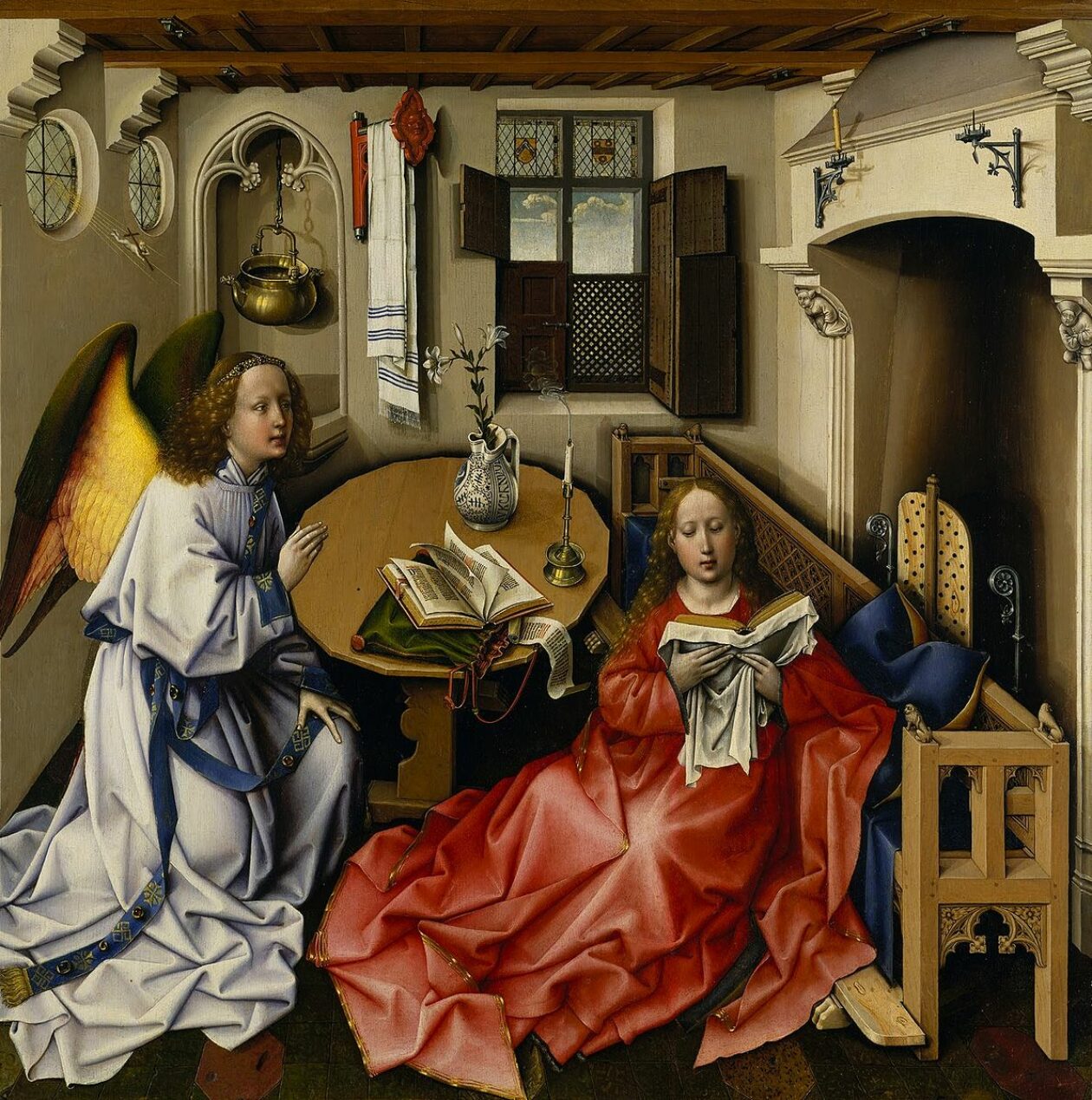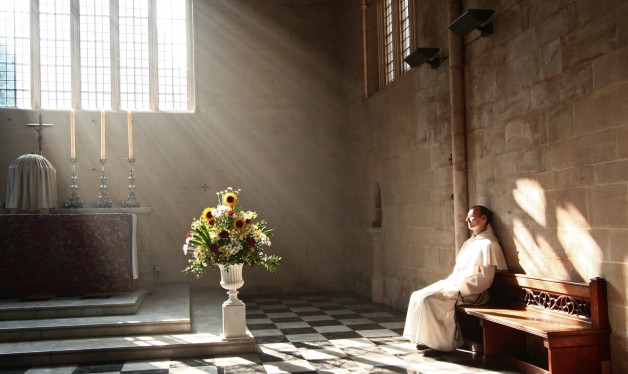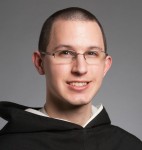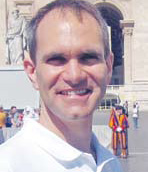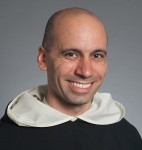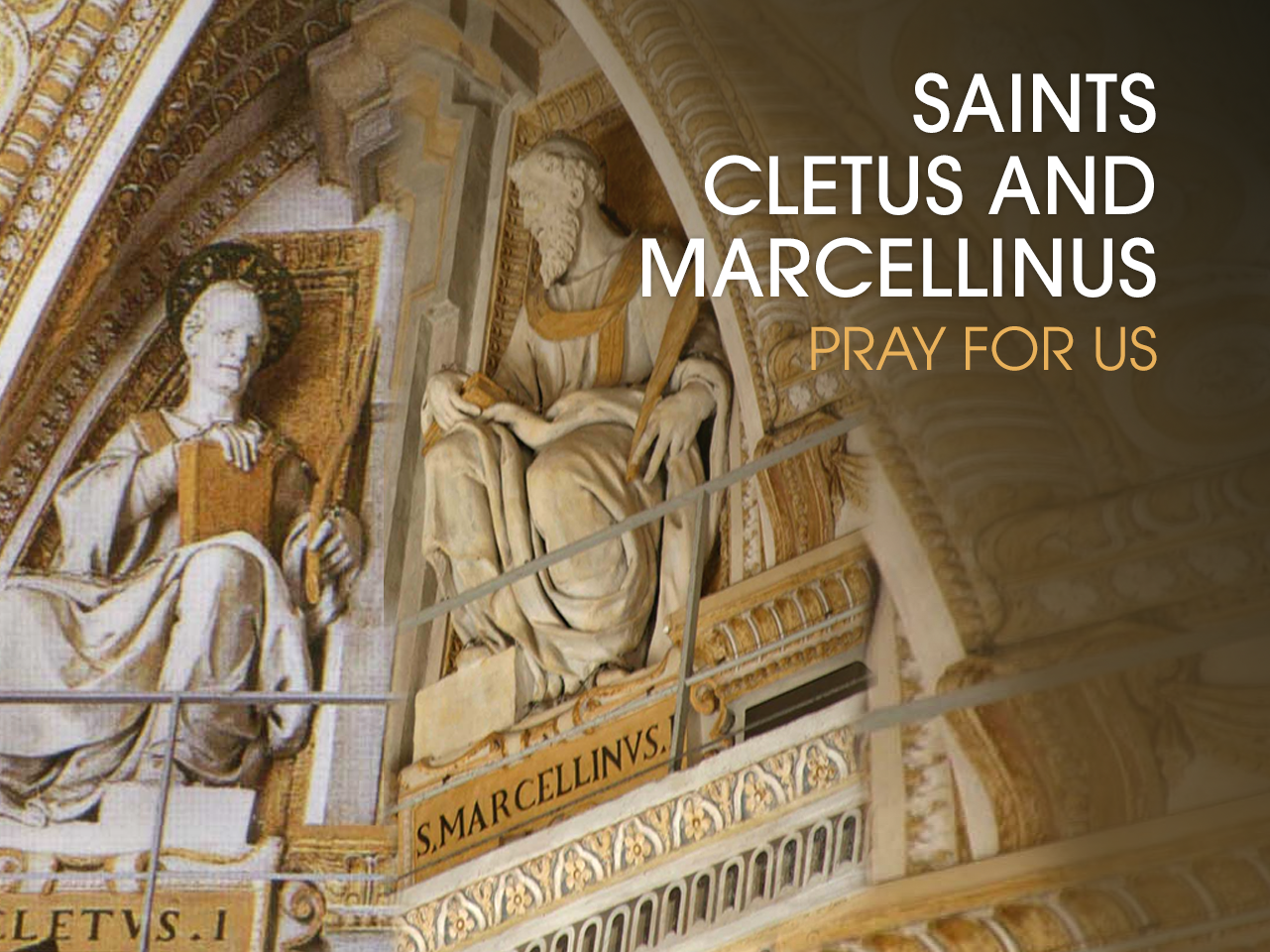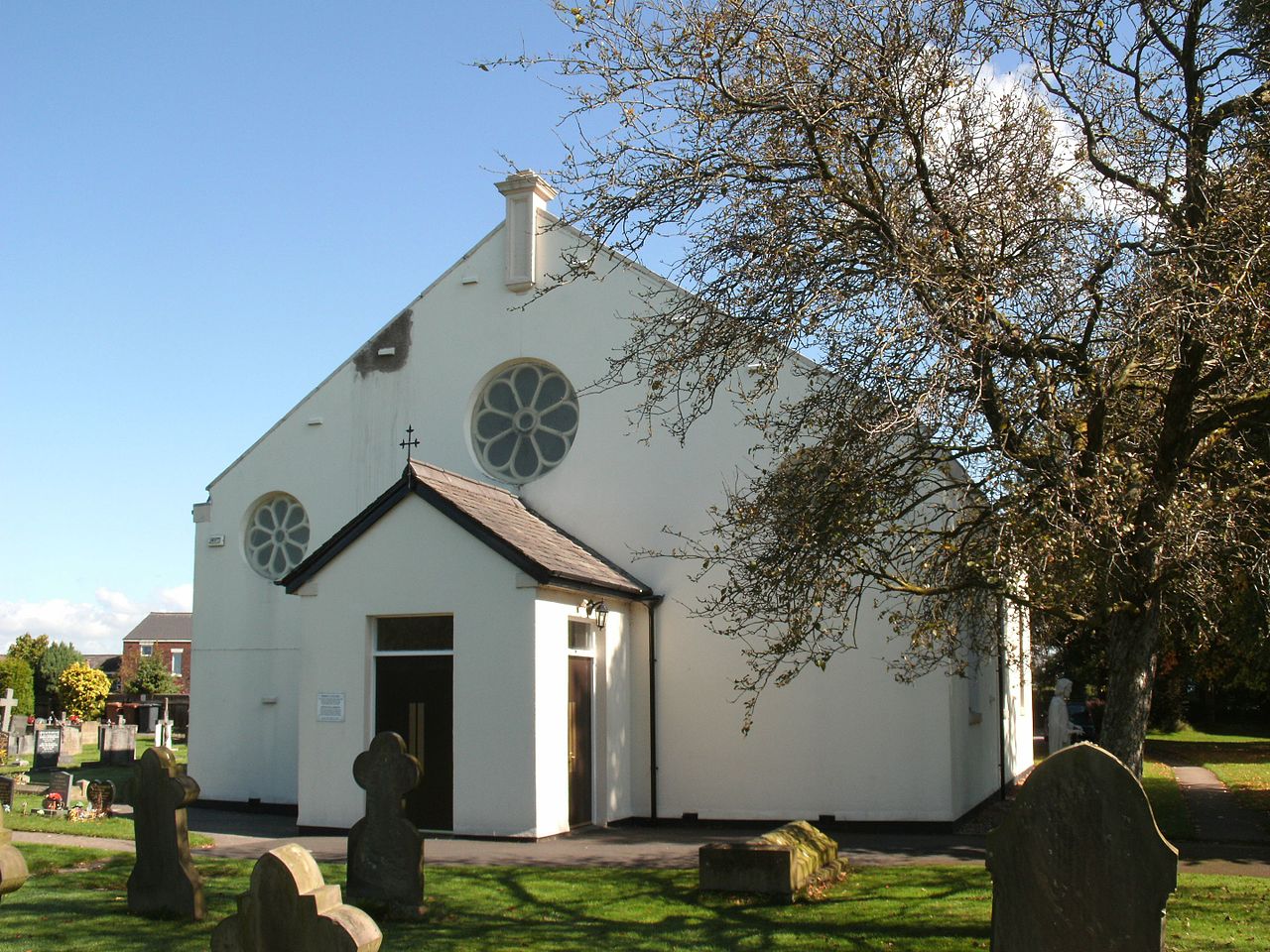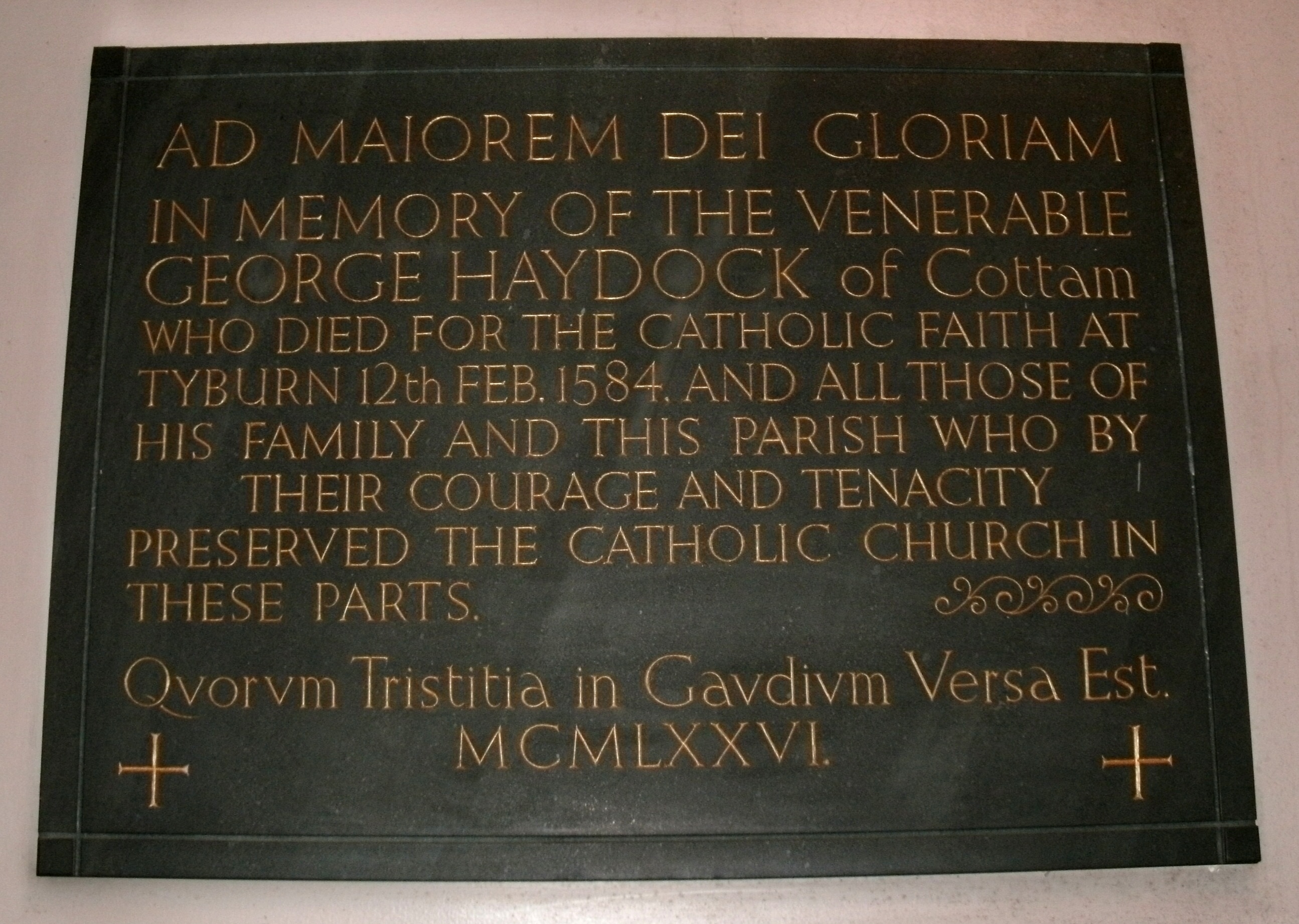
-the wheel of fortune from the Burana Codex; The figures are labelled “Regno, Regnavi, Sum sine regno, Regnabo”: “I reign, I reigned, my reign is finished, I shall reign.” Please click on the image for greater detail. Bavarian State Library, Munich, Codex Buranus (Carmina Burana) Clm 4660; fol. 1r with the Wheel of Fortune, circa 1230, Anonymous

-the Rota Fortuna, a modern interpretation
The modern, or current idea of Freedom, is much different than it has been. The idea of Freedom in the current age is the freedom from any constraint, hence the freedom to do whatever I want. Sometimes called the freedom of indifference, from Ockham, focusing solely on the will, with no spiritual dimension.
This is dramatically different from the traditional Christian concept of Freedom. Traditionally, the Christian ideal of freedom was the freedom from attachment, or inordinate desire, from the goods of this world, this life, and hence, the Freedom for Excellence.
The Freedom for Excellence, which we receive as a gift from our loving God, is a freedom from attachments to accomplishments, possessions, competitiveness, and odious comparisons between ourselves. It is a freedom arising from gazing at God as He presents Himself to us, and loving God intently. God gives us this freedom as a gift. He is the origin and the end of this excellence, to which we are all called. It is the power to act freely with excellence and perfection; proceeding from reason and will, therefore rooted in inclinations to truth and goodness. The Freedom for Excellence is rooted in the soul’s spontaneous inclinations to the good and the true, natural human disposition toward beatitude, and the perfection of the good.
God made us and He calls us back to Himself. This is excellence at its core. He asks only that we attend to Him, with all our hearts, with all our souls, with all our strength, and with all our minds. He wants us to look at Him, and love Him. At the center of the Rota Fortuna is often depicted Christ Himself, the message being: detach yourself from the desires for things of this life, for they do not last and cannot satisfy. Focus on Christ, for He alone is our salvation, our everything, our every satisfaction. He alone can satisfy human desire, the human heart.
The Rota Fortuna, the Wheel of Fortune, was commonly used in middle ages and originally belonged to the Roman goddess Fortuna, and hence the reason the zodiac is a wheel . The Rota Fortuna also appears as a card in a deck of tarot cards. The goddess Fortuna is sometimes depicted as spinning the wheel, with a blindfold over her eyes. This wheel is painted in many medieval Swedish churches as well.
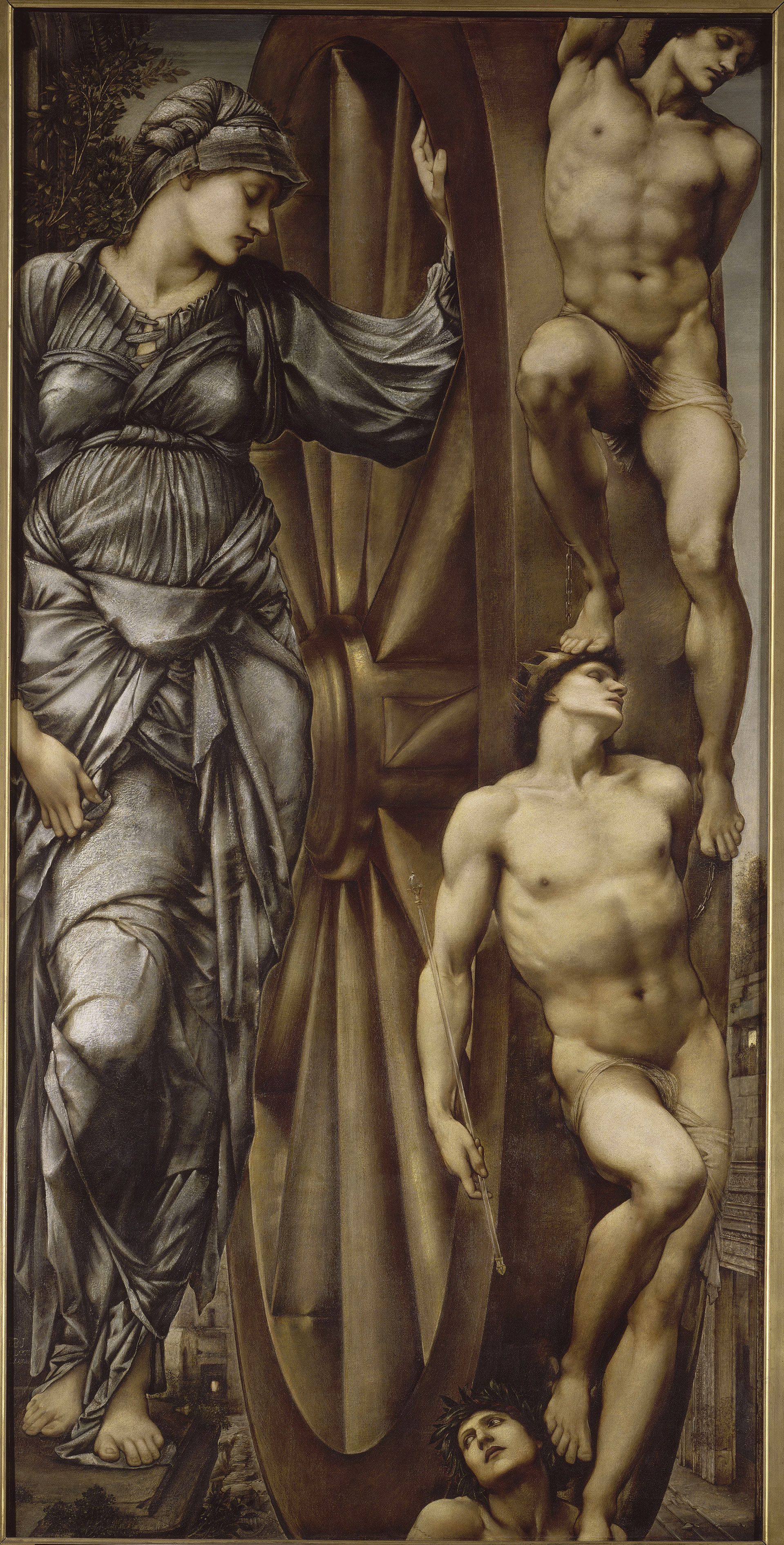
-The Wheel of Fortune, by Edward Burne-Jones, 1875-1883, Musée d’Orsay
The wheel traditionally depicts a young, happy-go-lucky character that, in the prime of his youth, jumps onto the wheel. Besides this aspirant are, traditionally, the word, “Regnabo”, I shall reign. At the top of the wheel sits a king crowned, the pinnacle of success, the summit of powers, even referring to our bodily powers of youth, which wane quickly with the onset of middle age, a prelude of the total, complete disability and corruption to come, even if health remains ruddy, due solely to age. The word next to the reigning monarch is “Regno”, “I reign”. Next, at 3 PM, is a former king falling off the wheel, deposed in fortune and power, with the word “Regnavi”, “I reigned”. And, finally, at the bottom is the completely destitute beggar, with the words, “Sum sine regno”, “I reign no more”, the climax of life.
In the modern interpretation above, the doves by his side representing his innocence. Flanking him in the image is a picture of the rising sun, symbolizing the early morning stages of life. Written beside him is the text “I will rule”. In the older versions of the wheel the latin text “Regnabo” was written which means “I shall reign”.
In the modern interpretation above, to the above left of the subject is the greek letter ALPHA. This is the first letter of the Greek alphabet and this also signifies the beginning. On the top right is the Greek letter OMEGA. This is the last letter in the Greek alphabet. Alpha and Omega comes from the phrase “I am the Alpha and the Omega, the First and the Last, the Beginning and the End” from the book of Revelations. This is a reference to the nature of the wheel- it brings the young rookie from the Alpha point towards the Omega point. The Omega point being the place of one’s death.
On top of the wheel there is a muscle man standing waving a gun defiantly in the air. He is strong and is in the prime of his life. Behind him the sun is at its highest point in the sky. He feels like an indestructible conqueror that nothing can stop. Behind him there is a text that says “I rule” making a reference to the old latin text “Regno” or “reign”, which accompanied this character.
Lastly an old man is being pulled towards his grave by a smiling devil. The night has come and life has started to fade in the last cycle of the wheel. The moon looks on as all this transpires. Written by his side is the text”I ruled” signifiying that his time is at an end. In the original wheels the latin text “Regnavi” or “I reigned” was written. Finally below the wheel a skeleton lies silently on the ground saying nothing while animals look on as the wheel keeps spinning.
O noble Peter, Cyprus’ lord and king,
Which Alexander won by mastery,
To many a heathen ruin did’st thou bring;
For this thy lords had so much jealousy,
That, for no crime save thy high chivalry,
All in thy bed they slew thee on a morrow.
And thus does Fortune’s wheel turn treacherously
And out of happiness bring men to sorrow.
~ Geoffrey Chaucer, The Canterbury Tales, The Monk’s Tale
Makes me think of Ozymandias by Shelley. Romans 13:11.
Love,
Matthew
